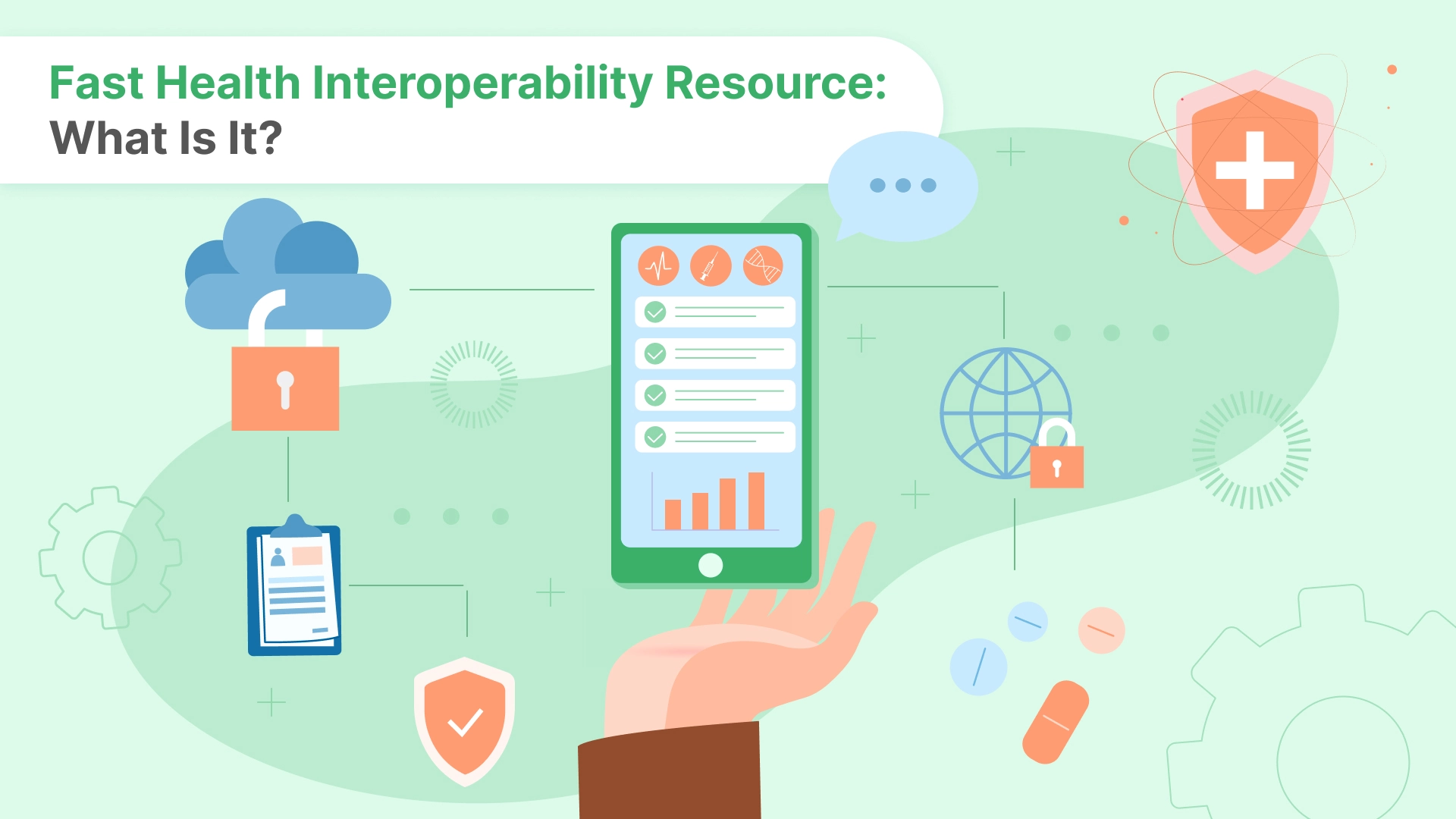

Advantages & Disadvantages of API Solutions in Healthcare
The emergence of fast, secure, and dependable data transmission among various healthcare applications has unlocked the possibility of greater connectivity within the medical industry. Now, the task at hand is to persuade healthcare providers to share their application programming interface (API) and permit other developers to incorporate patient health information into their applications, while ensuring compliance with safety regulations.
Let’s delve into the question of whether it is worthwhile to share your API, either at no cost or for financial gain. Explore this!
So: Medical or Healthcare API? That’s the Question
The terms “medical API” and “healthcare API” may sound similar, but they have distinct differences.
Medical API specifically refers to the Active Pharmaceutical Ingredient, which is the key component responsible for the effectiveness of a particular medication. On the other hand, healthcare API refers to an application programming interface integrated into healthcare software. It allows for seamless collaboration with other applications in healthcare or other industries, thereby enhancing the user experience.
To better understand healthcare APIs, let’s consider a simple example. If you grant permission, your iPhone Health App can retrieve data from your electronic health record (EHR). The healthcare provider API makes this data exchange possible, acting as a transmitter between your EHR and the Health App on your iPhone.
Although this is a basic illustration, the application of healthcare APIs extends far beyond. It offers numerous benefits for API owners, users of third-party apps, and app developers, particularly within the industry. The potential of healthcare APIs is vast, facilitating improved connectivity and innovation in the healthcare ecosystem.
Why Is It So Crucial?
APIs offer a straightforward technology that brings forth a plethora of benefits for data exchange and interoperability in healthcare. What primary advantages do they provide?
Enhanced Connectivity: Health information, being highly sensitive, can now be accessed and analyzed across different devices, including Internet of Things (IoT) devices. This seamless connectivity allows individuals to incorporate self-care practices into their daily routines, rather than relying solely on sporadic visits to professionals.
Expanded Collaboration: Through the secure exchange of data between applications facilitated by APIs, the healthcare industry as a whole, including hospitals, pharmaceutical manufacturers, health insurance companies, medical device producers, and volunteer organizations, can foster extensive and fruitful cooperation. By freely sharing information, these entities can discover novel ways to deliver better services, operate more efficiently, and contribute to advancements in the healthcare sector.
Fueling Innovation: APIs empower the exchange, transfer, and analysis of data, presenting boundless opportunities for innovation. Their implementation has already sparked significant transformations in healthcare services. For instance, by establishing a connection between a mentally ill patient’s social media profile and a remote medical services app, the identification of unusual behavioral patterns can trigger an alert for the patient’s healthcare provider, enabling timely intervention and care.
These illustrations vividly demonstrate how APIs have the potential to revolutionize the healthcare landscape, fostering seamless connectivity, encouraging collaboration, and driving innovative solutions.
Fast Health Interoperability Resource: What Is It?

Given the highly sensitive and valuable nature of medical and health data, it is imperative for healthcare API companies to adhere to strict standards regarding data standardization, security, and integration. The Fast Healthcare Interoperability Resources (FHIR) framework provides a comprehensive set of requirements for ensuring the seamless exchange of content between different applications. Within this framework, content is treated as a resource and must fulfill the following criteria:
Common Definition & Representation: All resources must have a shared definition and a consistent method of representation. This ensures that data can be accurately interpreted and utilized across various healthcare applications.
Uniform Metadata: A common set of metadata is required for each resource, enabling comprehensive and standardized information about the data. This facilitates efficient data management and allows for effective interoperability between different systems.
Human-Readable Components: Every resource should include a human-readable part, allowing professionals and users to easily comprehend the information presented. This promotes better understanding, accessibility, and usability of the data.
FHIR serves as a roadmap, enabling clear identification of the specific resources that can be accessed by third-party applications. Compliance with FHIR standards is essential for all healthcare APIs as it ensures the development of cutting-edge healthcare solutions that seamlessly access and leverage data stored and processed by other software apps. By adhering to these requirements, API developers can create top-notch solutions that meet the highest standards of interoperability and data accessibility.
Benefits of APIs
APIs offer significant advantages across various industries but hold special benefits for the healthcare sector. Let’s explore these unique advantages:
Accelerated Development Process: APIs greatly contribute to rapid and innovative development within the industry. By utilizing pre-built APIs, developers can expedite the development process without compromising the end-user experience. This enables quicker implementation of new healthcare solutions and facilitates the timely delivery of innovative services.
Integration & Personalization: Sharing your data with third-party applications allows for enhanced integration and personalization. By gaining insights into the additional apps patients use to monitor their health, their data management practices, and their health-related concerns, healthcare providers can develop more tailored and personalized services. This deep understanding of user preferences and needs enables the creation of healthcare solutions that better meet the expectations and requirements of the patients.
Additional Revenue Opportunities: Not all healthcare APIs need to be provided free of charge. By offering your API as a paid service, granting permission to third-party developers to utilize it can become a lucrative source of additional profits. This monetization model allows API owners to generate revenue streams while ensuring the continued availability and support of their API. It also incentivizes ongoing enhancements and updates to provide developers with a high-quality and valuable service.
These advantages demonstrate the transformative potential of APIs in the healthcare industry, empowering accelerated development, facilitating integration and personalization, and presenting opportunities for additional revenue generation.
Limits to an API Introduction
While APIs offer numerous benefits, there are certain limitations to consider when introducing them. Here are the key factors to keep in mind:
Budget Constraints: Developing an enterprise healthcare solution is inherently costly, and the creation of APIs can further increase overall expenses. The cost of API development alone can range up to $20,000 or more, depending on the complexity and specific requirements of the project. It’s important to carefully evaluate the financial implications and allocate the necessary resources to ensure a successful API implementation.
Privacy & Security Concerns: Data sharing and privacy issues are significant considerations when implementing APIs. Safeguarding medical information requires adherence to additional standards and regulations. For example, OpenID Connect can be utilized to authenticate and authorize access via APIs, enhancing privacy and security measures. It is crucial to prioritize the protection of sensitive data and ensure compliance with relevant privacy regulations to maintain the trust of patients and stakeholders.
Compliance with Standards: Healthcare APIs are subject to specific standards that ensure interoperability and data exchange within the industry. Achieving compliance with these standards may also entail additional costs. However, adherence to these standards is vital to ensure seamless integration with existing healthcare systems and promote effective data exchange and interoperability.
Workflow & Cultural Considerations: The introduction of APIs in healthcare can disrupt traditional workflows and challenge established cultural norms. Some companies may express concerns about managing the influx of information when patients gain access to specific data and start generating their own data. It’s important to address these concerns proactively, establish robust workflows, and foster a culture that embraces the benefits of patient engagement and data exchange.
By acknowledging and addressing these limitations, healthcare organizations can mitigate potential challenges and ensure a successful API implementation that aligns with their budget, privacy and security requirements, standards compliance, and cultural considerations.
Final Word
API development, sharing, and distribution present an additional avenue to add value to medical data and empower patients who utilize specific health monitoring applications. Our team of experienced tech professionals specializes in medical solution development and is well-equipped to address any concerns you may have regarding API creation. We understand the importance of leveraging technology to enhance healthcare services and are ready to engage in discussions to ensure its successful implementation.
Faq
What are API solutions in healthcare?
+API solutions enable interoperability between various healthcare systems, such as EHR, health information exchanges (HIEs), medical devices, and third-party apps. They facilitate the seamless exchange of patient data, laboratory results, medication information, and other relevant health one. Healthcare APIs also enable the development of innovative applications and services.
What are the advantages of using API solutions in healthcare?
+It allows for seamless integration between different healthcare systems. APIs facilitate the development of innovative healthcare apps and services, as developers can leverage existing data and functionality through standardized interfaces.
API solutions enhance patient engagement by enabling access to their own health data, facilitating remote monitoring, and supporting personalized health management.
Are there any disadvantages or challenges associated with API solutions in healthcare?
+Security is a significant concern when integrating healthcare systems through APIs, as sensitive patient data needs to be protected from breaches.
Maintaining compatibility among different APIs can be challenging due to varying protocols and data formats across systems.
API reliances can introduce vulnerabilities, as any issues in the API can disrupt the functionality of dependent apps.
How do API solutions improve healthcare innovation?
+They enable seamless integration and data exchange between different healthcare systems and apps, fostering interoperability.
APIs empower developers to create new healthcare apps and services by providing access to a wide range of data.
APIs support the integration of emerging technologies, such as artificial intelligence (AI) and machine learning (ML), enabling advanced support systems.
Tell us about your project
Fill out the form or contact us

Tell us about your project
Thank you
Your submission is received and we will contact you soon
Follow us
